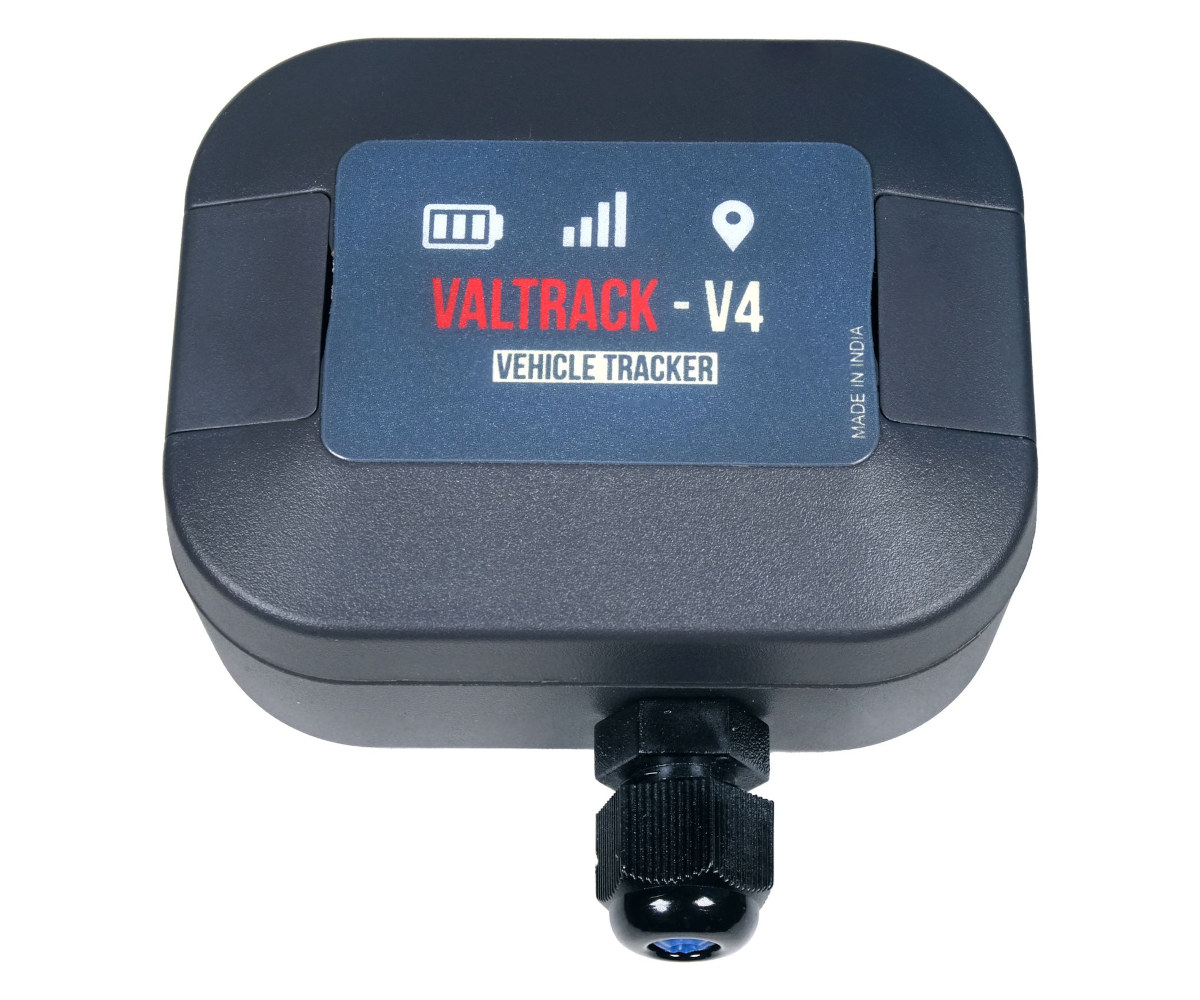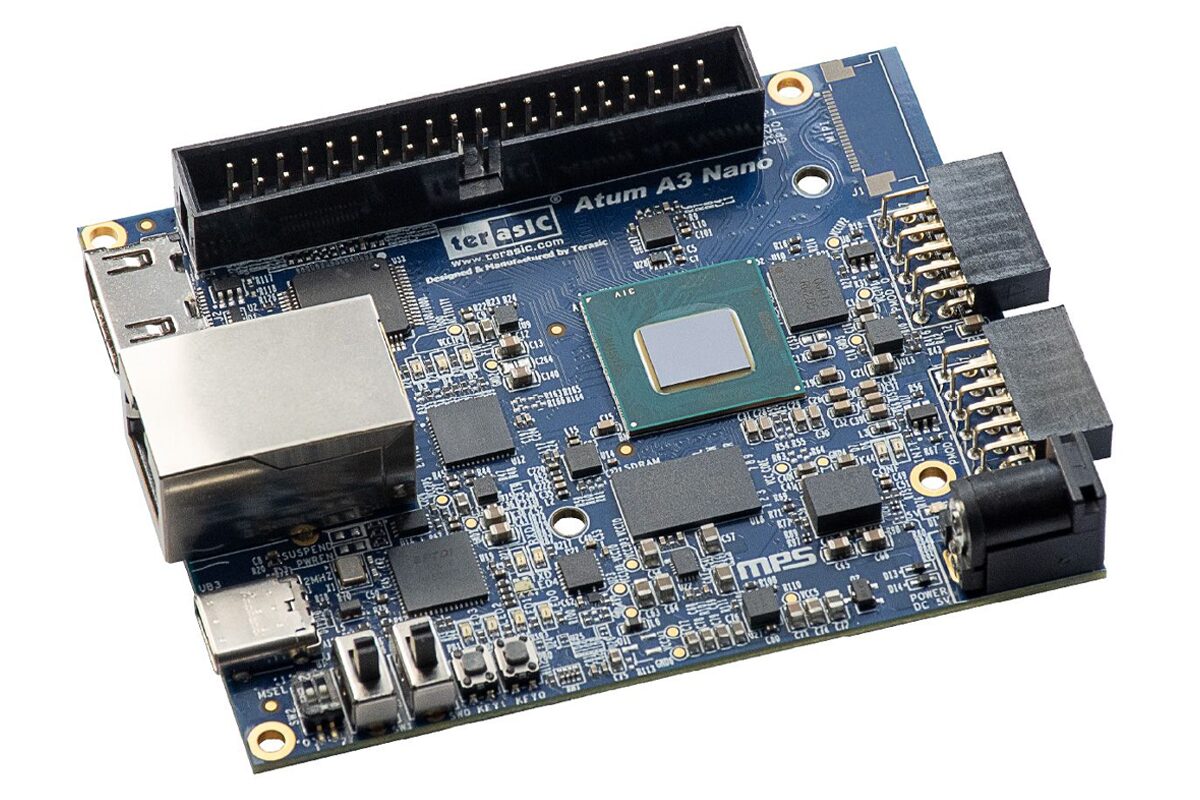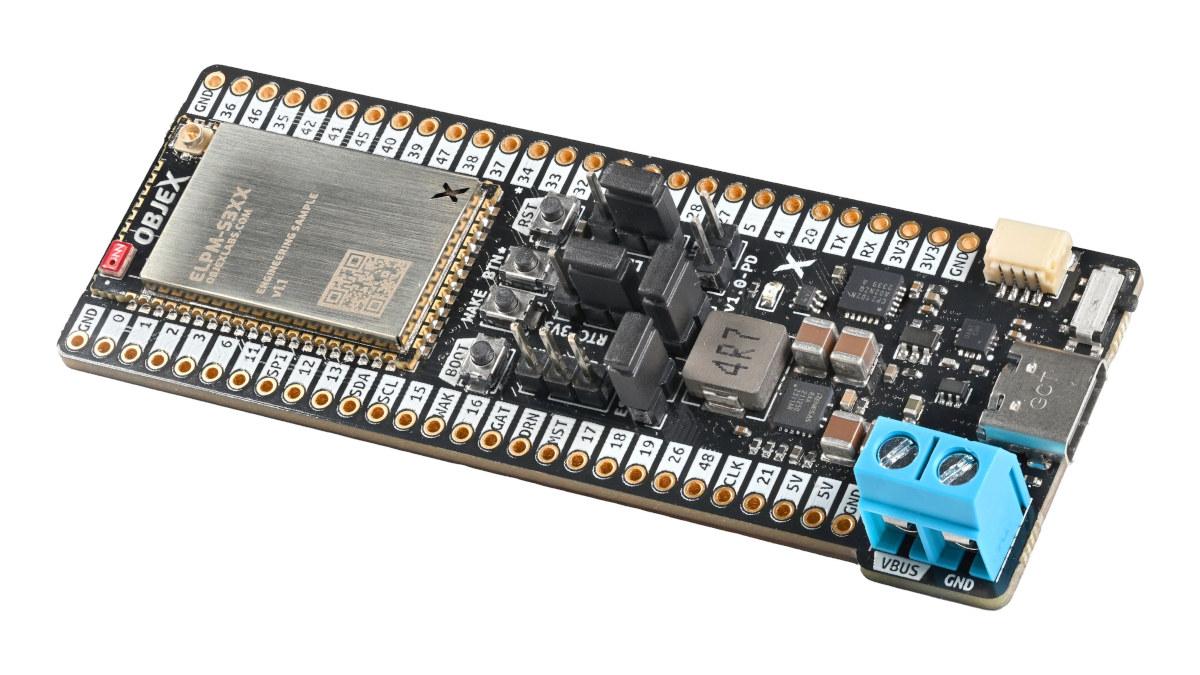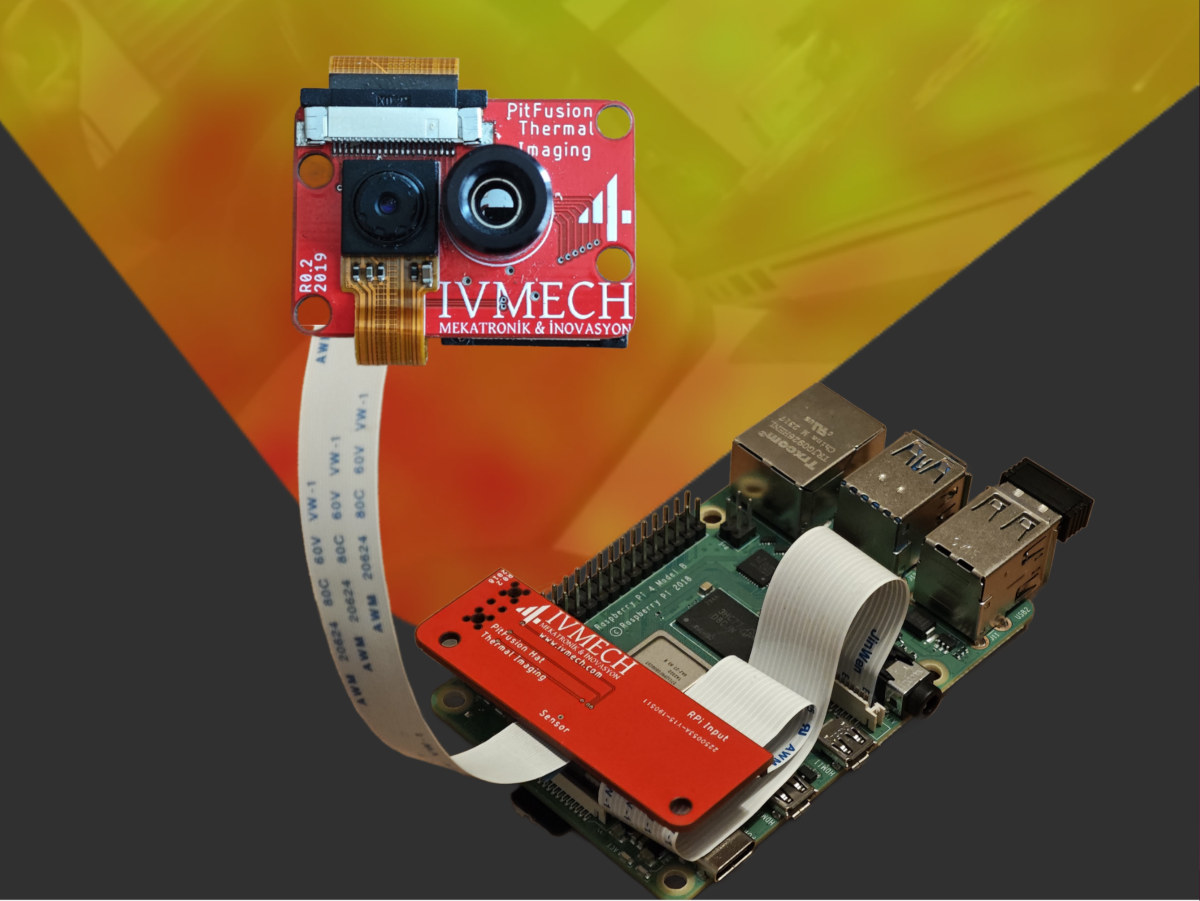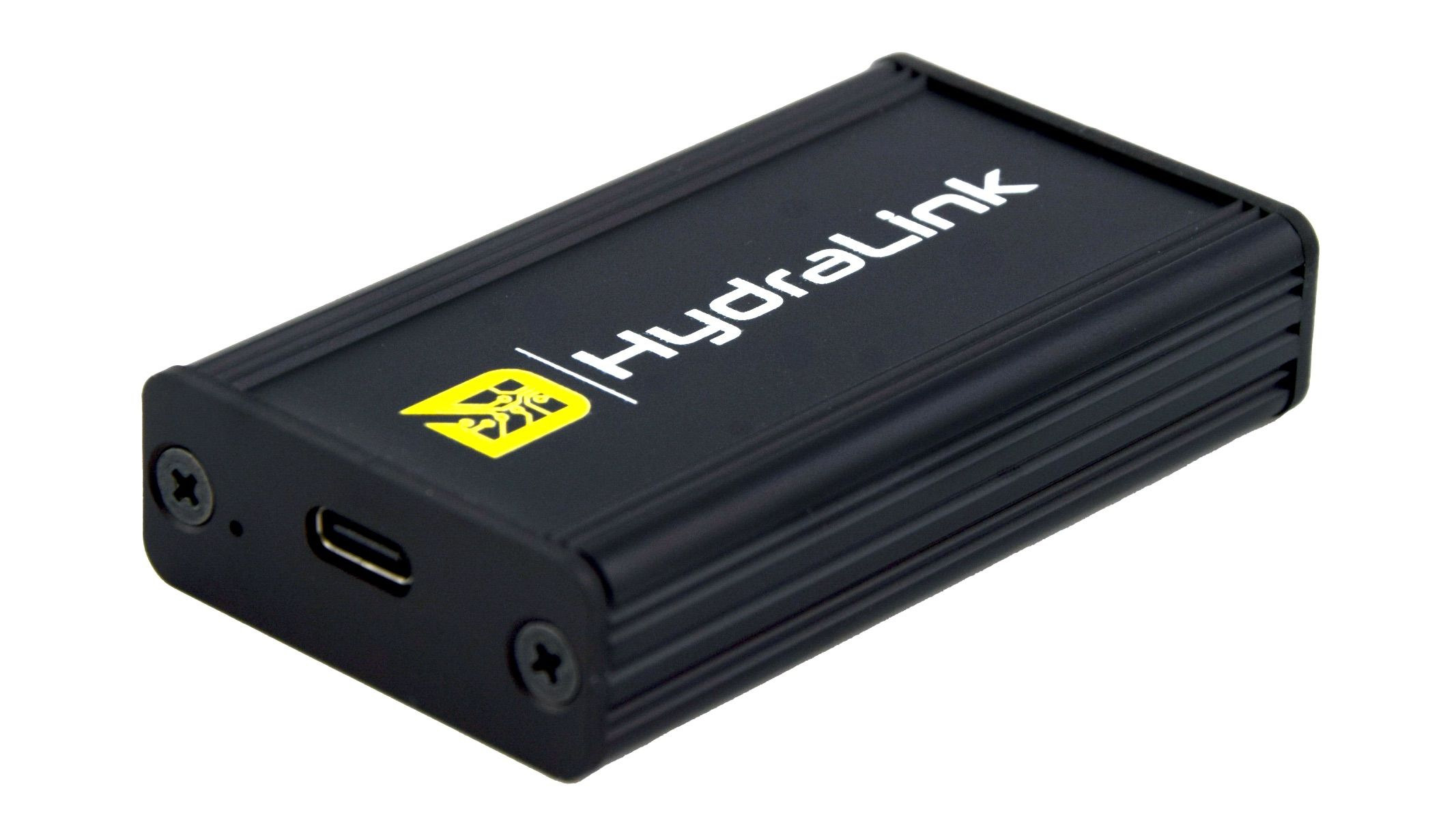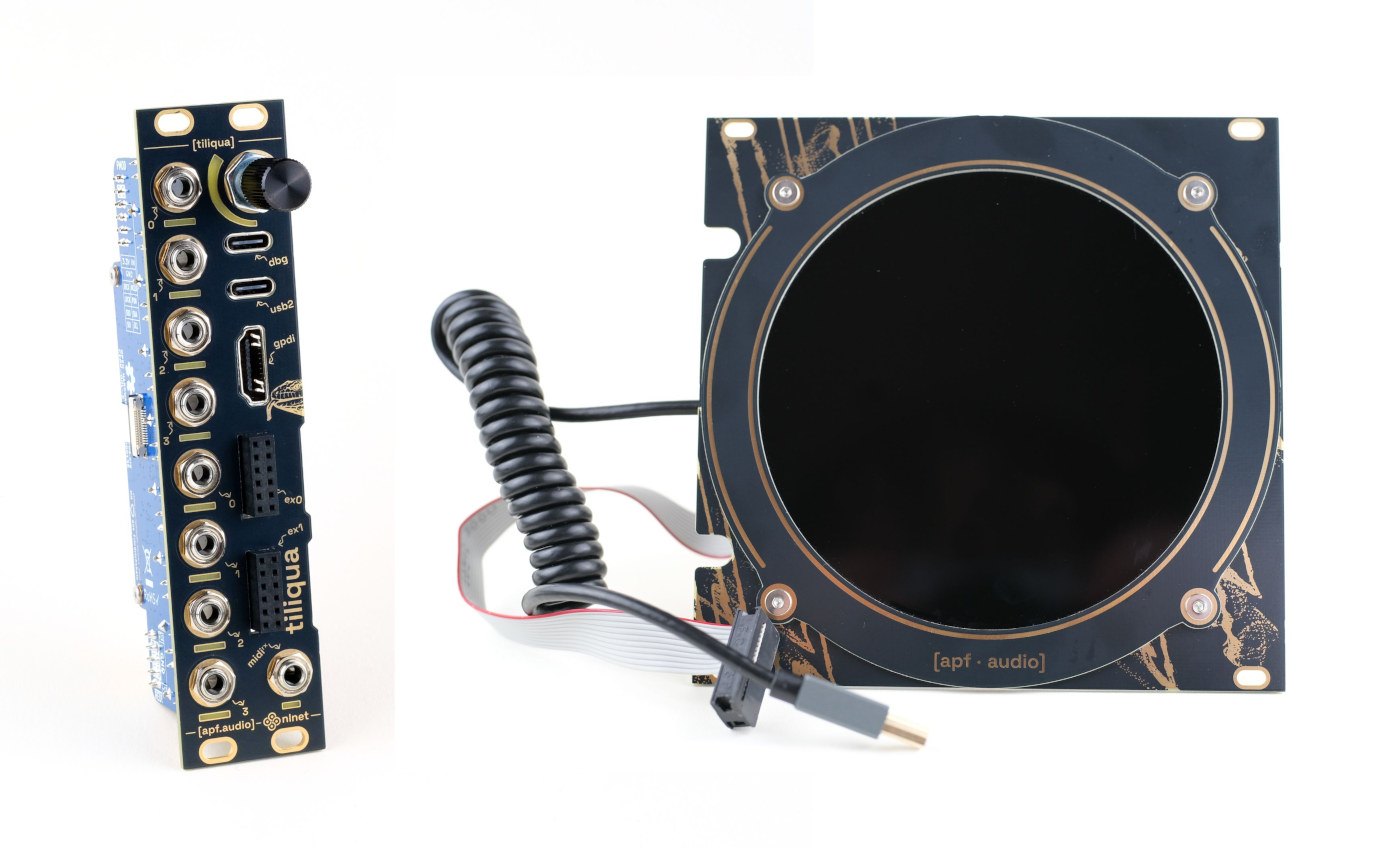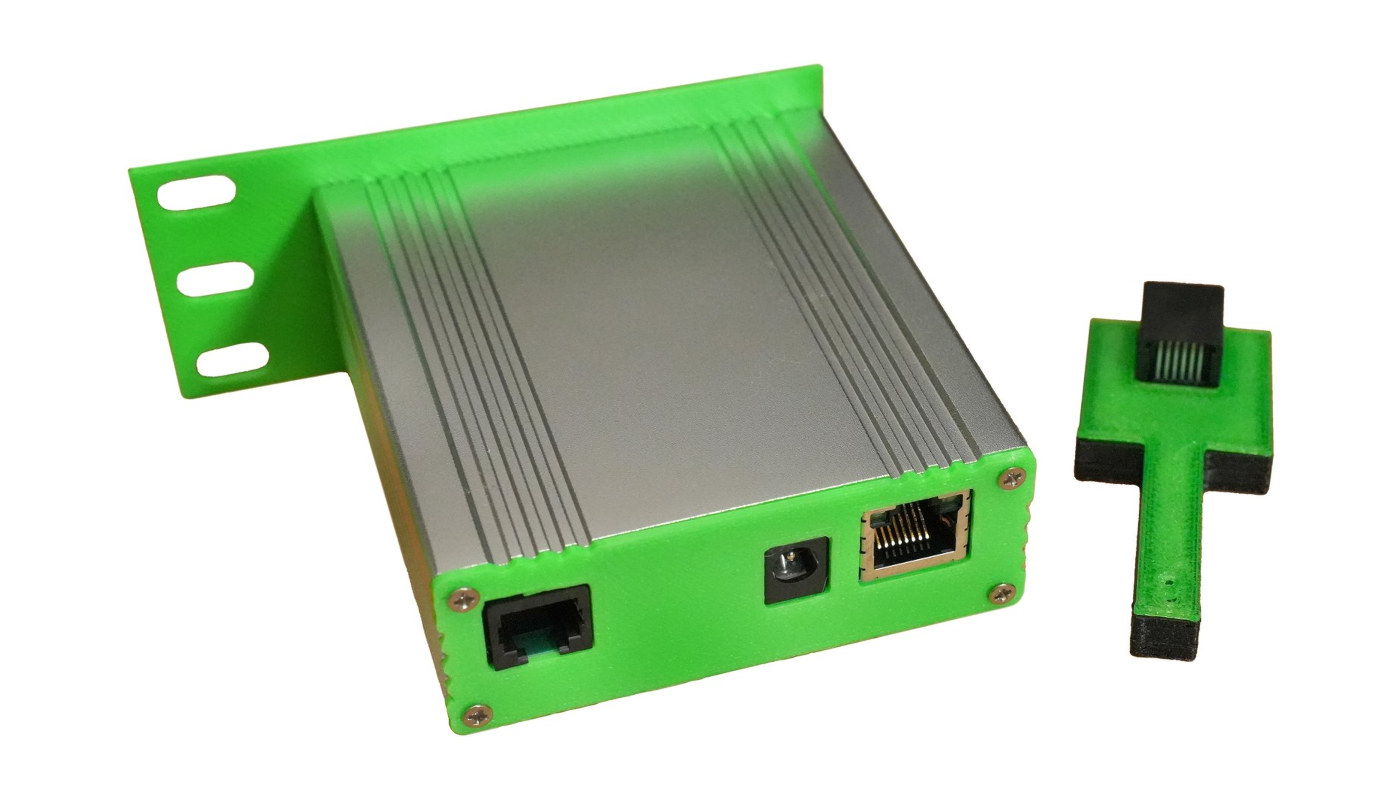Valetron Systems VALTRACK-V4-VTS-ESP32-C3 (or Valtrack V4 for short) is a 4G LTE GPS vehicle tracker based on ESP32-C3 WiFi and Bluetooth SoC and a SIMCom SIM7672 cellular and GNSS module. Designed to track bicycles, cars, or trucks, the Valtrack V4 GPS tracker is housed in an IP67 waterproof enclosure, takes 12V to 42V DC input from a lead battery or 3.7-4.2V from a backup LiPo or Li-Ion battery, and features an accelerometer to wake up when motion is detected or detect theft, as well as three RGB LEDs for status. Valtrack V4 specifications: Wireless MCU – Espressif ESP32-C3FH4 CPU – 32-bit RISC-V microcontroller @ up to 160 MHz; Memory – 400 KB SRAM Storage – 4 MB flash Wireless – 2.4 GHz Wi-Fi 4 & Bluetooth 5.0 Cellular and GNSS connectivity SIM7672G 4G LTE Cat 1 module with Global LTE band, 2G fallback, and GNSS support Nano SIM card […]
Atum A3 Nano development board combines Agilex 3 FPGA and USB-Blaster III programmer (Crowdfunding)
Terasic’s Atum A3 Nano is a compact FPGA development board built around Altera’s largest Agilex 3 FPGA (A3CZ135BB18AE7S). The FPGA features 135K logic elements, embedded memory blocks (6.89 Mbit M20K, 1.4 Mbit MLAB), and 368 multipliers, making it suitable for demanding applications such as robotics, automotive systems, smart city infrastructure, consumer electronics, and advanced image processing. Measuring just 85 x 70 mm, the Atum A3 Nano board includes 64 MB SDRAM, Gigabit Ethernet, HDMI output, a microSD card slot, and an onboard USB-Blaster III programmer accessible via a USB Type-C port. Expansion options include a 40-pin GPIO header and two PMOD headers, and the board also features user I/Os like LEDs, buttons, and switches. Additionally, it supports add-ons such as displays, cameras, wireless modules, and motor control kits. Atum A3 Nano specifications: FPGA – Altera Agilex 3 A3CZ135BB18AE7S 135,110 logic elements 6.89 Mbit M20K, 1.4 Mbit MLAB 368 18×19 multipliers 4 I/O […]
OBJEX Link S3LW ultra-low-power ESP32-S3 LoRaWAN board takes up to 100W power input
OBJEX Link S3LW is a small development board based on the ultra-low-power ELPM-S3LW module with ESP32-S3 MCU and LoRaWAN connectivity and the ability to take 100W input via USB-C or a 2-pin terminal block for driving motors, controlling RGB LED strips, and other high-power projects. It’s compliant with the USB PD standard, features two 28-pin headers and a STEMMA I2C connector for expansion, as well as a built-in CP2102/CP2104 USB to serial bridge for debugging, and a few buttons. The company also offers an OBJEX ELPM-S3 module and OBJEX Link S3 board with the same features, minus LoRa/LoRaWAN support. OBJEX Link S3LW specifications: Wireless module ELPM-S3LW v1.2 Wireless SoC – ESP32-S3FN8 CPU – Dual-core 32-bit Xtensa LX7 microcontroller with AI vector instructions up to 240MHz, RISC-V ULP co-processor Memory – 512KB SRAM Storage – 8MB flash Wireless – 2.4GHz WiFi 4 (802.11b/g/n), Bluetooth 5.0 BLE + Mesh LoRa support LoRa […]
PitFusion thermal imager for Raspberry Pi combines Melexis MLX90640 sensor and RGB camera (Crowdfunding)
IVMECH Mechatronics’ PitFusion is a thermal imager designed for the Raspberry Pi based on a Melexis MLX90640 32×24 thermal sensor and an Adafruit 0V5647 RGB sensor comparable to the Raspberry Pi Camera Module v1.3. The kit enables users to capture thermal and visible images simultaneously, and can be useful for automation, robotics, security (human/pet motion detection), non-contact temperature measurement, and environmental monitoring applications. PiFusion specifications: Thermal Sensor – Adafruit LX90640 with 32 x 24 pixel array Camera Sensor – Adafruit 0V5647 comparable to the RPi Camera Module v1.3 with 2592 x 1944 resolution Temperature Range – -40°C to 300°C Frame Rate – Up to 32 Hz (thermal), 30 fps (camera) Spectral Range – 8 µm to 14 µm (optimal for human body and object detection) Host Interfaces – I2C for thermal sensor, CSI for camera) Dimensions – 40 x 30 x 10 mm Weight – 15 grams IVMECH says the […]
HydraLink USB-to-Automotive Ethernet dongle works over a single twisted pair (Crowdfunding)
HydraLink is a compact USB-to-Automotive Ethernet dongle that supports 100BASE-T1 and 1000BASE-T1 standards over a single twisted pair (no large RJ45 connector needed) and provides a solution for diagnosing, testing, and prototyping automotive networks. The rationale behind HydraLink is that the automotive sector is undergoing a shift from CAN-based systems to advanced Automotive Ethernet networks like BroadR-Reach (802.3bw) that allow multiple in-vehicle systems to simultaneously access information over unshielded single twisted pair cables. So as I understand it, the HydraLink is the modern equivalent of OBD-II USB scanners relying on Ethernet instead. HydraLink specifications: Networking – 100 Mbps or 1000 Mbps automotive Ethernet via 2.54 mm pin header (Note: the board below features a Broadcom BCM89811 BroadR-Reach automotive Ethernet RGMII transceiver limited to 100BASE-T1 data rate) USB – USB 3.0 Gen 1 Type-C port Misc – Link activity and link speed LED indicators Power Supply – 5V via USB interface […]
Tiliqua – An hackable Lattice ECP5 FPGA-based audio multitool for Eurorack (Crowdfunding)
Tiliqua is a Lattice ECP5 FPGA multitool board designed for audio and visual synthesis and compatible with the Eurorack modular synthesizer format. The board features four audio input jacks and four audio output jacks, all of which can be used as touch-sensitive inputs when not connected. Other interfaces include a USB 2.0 Host/Device port, MIDI support, two PMOD expansion connectors, and a display interface to connect the Tiliqua screen for visual effects. All those features make it suitable for audio-rate modulation, low-latency effects, video synthesis, high-speed USB audio, or emulating retro hardware. Tiliqua specifications: FPGA – Lattice ECP5 (LFE5U-25F-6BG256) FPGA supported by the open-source FPGA flow System Memory – 32MB PSRAM (tested up to 200MHz DDR / 400MB/s) Storage 16MB SPI flash for the FPGA 16MB SPI flash for the Raspberry Pi RP2040 2Kbit I2C EEPROM: for storing calibration constants Video Output – Digital video GPDI (General Purpose Differential Interface) […]
Air Lab is a portable Wi-Fi & Bluetooth LE air quality monitor with an e-paper touchscreen display (Crowdfunding)
Networked Artifacts’ Air Lab is a portable air quality monitor based on ESP32-S3 Wi-Fi & Bluetooth LE wireless SoC, equipped with an e-paper touchscreen display, and plenty of sensors to measure CO2, temperature, relative humidity, air pollutants (VOC, NOx), and atmospheric pressure. The Air Lab ships with a rechargeable 1,500 mAh battery that will be good for about 21 days on a charge in passive mode (taking measurements every minute), and you can also power it over its USB-C ports. It includes a debug port for people wanting to change the firmware, and a GPIO header to connect additional sensors if required. Data can be visualized on the e-paper display or transmitted over BLE or MQTT for integration with Home Assistant. The company also provides a CSV export function and a web-based dashboard for data visualization. Air Lab specifications: Main module – ESP32-S3 module with PCB antenna for 2.4GHz WiFi […]
Openviro Axe PoE is an RP2040-based environmental sensor for server rooms and cabinets (Crowdfunding)
Openviro Axe PoE is a rack-mountable, open-source environmental sensor designed to measure the temperature and humidity (and air pressure) in server rooms or cabinets with electrical equipment. The device is based on a Raspberry Pi RP2040 board with Ethernet connectivity housed in an aluminum enclosure and equipped with two RJ12 connectors for Bosch BME280 sensors with an accuracy of +/- 0.5°C. It provides better results than sensors placed in a machine that may be impacted by the internal components’ heat dissipation. For instance, the two sensor inputs can be used to measure the temperature and humidity of the intake and exhaust in a server rack. Openviro Axe PoE specifications: Microcontroller – Raspberry Pi RP2040 dual Arm Cortex-M0+ @133 MHz with 264 KB SRAM Storage – 16 MB flash memory Network – 10/100Mbps Ethernet RJ45 port via LAN8710Ai Expansion – 2x RJ12 connector for THP Probes Misc – 3x Buttons Power […]


